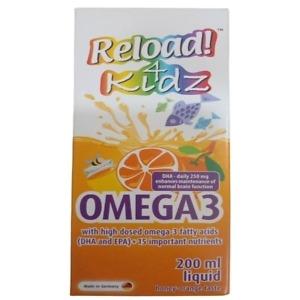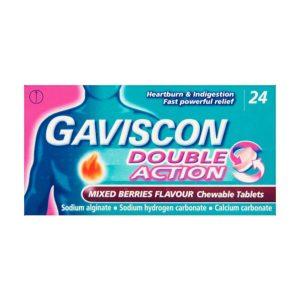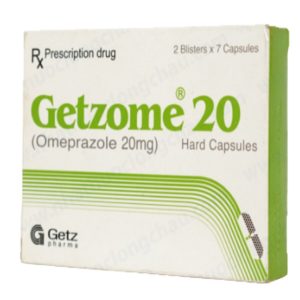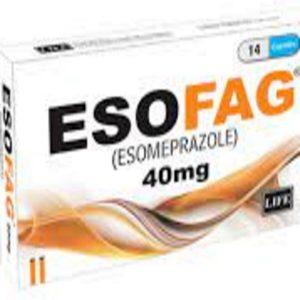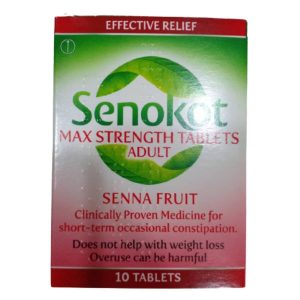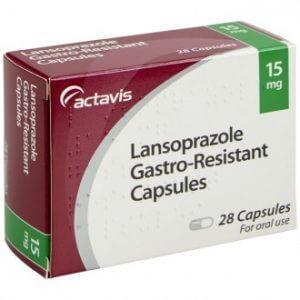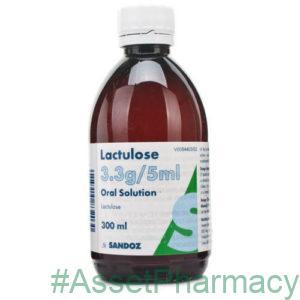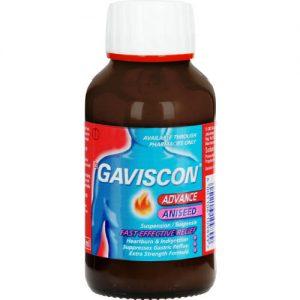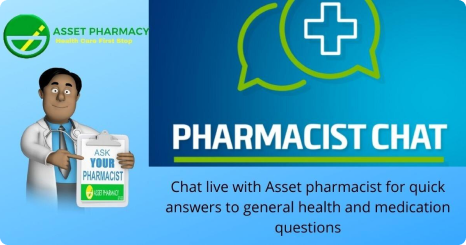Description
Nexium Tablets – Esomeprazole Tablets, 14 Tablets
If you suffer from heartburn, Nexium Tablets are here to help. This product contains esomeprazole, a medicine that belongs to a group of proton pump inhibitors. These work by reducing the amount of acid produced by your stomach, providing you with relief from the burning sensation. In addition, Nexium Tablets can also prevent ulcers from developing in the stomach lining and prevent damage caused by excess acid. So why suffer in silence? Get Nexium Tablets today and start living your life without heartburn!
What is Nexium Tablets used for?
Nexium is used to treat the following conditions:
Adults
- ‘Gastroesophageal reflux disease’ (GERD). This is where acid from the stomach escapes into the gullet (the tube which connects your throat to your stomach) causing pain, inflammation and heartburn.
- Ulcers in the stomach or upper part of the gut (intestine) that are infected with bacteria called ‘Helicobacter pylori’. If you have this condition, your doctor may also prescribe antibiotics to treat the infection and allow the ulcer to heal.
- Stomach ulcers caused by medicines called NSAIDs (Non-Steroidal Anti-Inflammatory Drugs). Nexium can also be used to stop stomach ulcers from forming if you are taking NSAIDs.
- Too much acid in the stomach caused by a growth in the pancreas (Zollinger-Ellison syndrome).
- Prolonged treatment after prevention of rebleeding of ulcers with intravenous Nexium.
Adolescents aged 12 years and above
- ‘Gastroesophageal reflux disease’ (GERD). This is where acid from the stomach escapes into the gullet (the tube which connects your throat to your stomach) causing pain, inflammation and heartburn.
- Ulcers in the stomach or upper part of the gut (intestine) that are infected with bacteria called ‘Helicobacter pylori’. If you have this condition, your doctor may also prescribe antibiotics to treat the infection and allow the ulcer to heal.
Can someone who is pregnant or breastfeeding use Nexium Tablets?
If you are pregnant or breast-feeding, think you may be pregnant or are planning to have a baby, ask your doctor or pharmacist for advice before taking this medicine
Nexium Tablets Reviews
After using Nexium Tablets, it’s helpful to let others know about your experience. Reviews of an item help other users know that medicines received have helped the condition it is claimed for, how well the treatment worked or any issues to be aware of. We invite our users to leave a review of both their treatment and of the service provided. Click on the reviews tab to see if there has been feedback on this item.
What is the price of Nexium Tablets in Nigeria?
The price of Nexium Tablets is N7230 N9492
Where can you buy Nexium Tablets In Nigeria?
You can Buy Nexium Tablets at Asset Pharmacy Lagos Nigeria, Nigeria’s Largest Online Pharmacy
How to Use
How to use Nexium Tablets
Always take this medicine exactly as your doctor or pharmacist has told you. Check with your doctor or pharmacist if you are not sure.
- If you are taking this medicine for a long time, your doctor will want to monitor you (particularly if you are taking it for more than a year).
- If your doctor has told you to take this medicine as and when you need it, tell your doctor if your symptoms change.
- Your doctor will tell you how many tablets to take and how long to take them for. This will depend on your condition, how old you are and how well your liver works.
- The recommended doses are given below.
Use in adults aged 18 and above
To treat heartburn caused by gastroesophageal reflux disease (GERD):
- If your doctor has found that your food pipe (gullet) has been slightly damaged, the recommended dose is one Nexium 40 mg gastro-resistant tablet once a day for 4 weeks. Your doctor may tell you to take the same dose for a further 4 weeks if your gullet has not yet healed.
- The recommended dose once the gullet has healed is one Nexium 20 mg gastro-resistant tablet once a day
- If your gullet has not been damaged, the recommended dose is one Nexium 20 mg gastro-resistant tablet each day. Once the condition has been controlled, your doctor may tell you to take your medicine as and when you need it, up to a maximum of one Nexium 20 mg gastro-resistant tablet each day.
- If you have severe liver problems, your doctor may give you a lower dose.
To treat ulcers caused by Helicobacter pylori infection and to stop them coming back:
- The recommended dose is one Nexium 20 mg gastro-resistant tablet twice a day for one week.
- Your doctor will also tell you to take antibiotics for example amoxicillin and clarithromycin.
To treat stomach ulcers caused by NSAIDs (Non-Steroidal Anti-Inflammatory Drugs):
- The recommended dose is one Nexium 20 mg gastro-resistant tablet once a day for 4 to 8 weeks.
To prevent stomach ulcers if you are taking NSAIDs (Non-Steroidal Anti-Inflammatory Drugs):
- The recommended dose is one Nexium 20 mg gastro-resistant tablet once a day.
To treat too much acid in the stomach caused by a growth in the pancreas (Zollinger-Ellison syndrome):
- The recommended dose is Nexium 40 mg twice a day.
- Your doctor will adjust the dose depending on your needs and will also decide how long you need to take the medicine for. The maximum dose is 80 mg twice a day.
Prolonged treatment after prevention of rebleeding of ulcers with intravenous Nexium:
- The recommended dose is one Nexium 40 mg tablet once a day for 4 weeks.
Use in adolescents aged 12 or above
To treat heartburn caused by gastroesophageal reflux disease (GERD):
- If your doctor has found that your food pipe (gullet) has been slightly damaged, the recommended dose is one Nexium 40 mg gastro-resistant tablet once a day for 4 weeks. Your doctor may tell you to take the same dose for a further 4 weeks if your gullet has not yet healed.
- The recommended dose once the gullet has healed is one Nexium 20 mg gastro-resistant tablet once a day.
- If your gullet has not been damaged, the recommended dose is one Nexium 20 mg gastro-resistant tablet each day.
- If you have severe liver problems, your doctor may give you a lower dose.
To treat ulcers caused by Helicobacter pylori infection and to stop them coming back:
- The recommended dose is one Nexium 20 mg gastro-resistant tablet twice a day for one week.
- Your doctor will also tell you to take antibiotics for example amoxicillin and clarithromycin.
- You can take your tablets at any time of the day.
- You can take your tablets with food or on an empty stomach.
- Swallow your tablets whole with a drink of water. Do not chew or crush the tablets. This is because the tablets contain coated pellets which stop the medicine from being broken down by the acid in your stomach. It is important not to damage the pellets.
- If you have trouble swallowing the tablets:
- Put them into a glass of still (non-fizzy) water. Do not use any other liquids.
- Stir until the tablets break up (the mixture will not be clear). Then drink the mixture straight away or within 30 minutes. Always stir the mixture just before drinking it.
- To make sure that you have drunk all of the medicine, rinse the glass very well with half a glass of water and drink it. The solid pieces contain the medicine – do not chew or crush them.
- If you cannot swallow at all, the tablet can be mixed with some water and put into a syringe. It can then be given to you through a tube directly into your stomach (‘gastric tube’).
Nexium gastro-resistant tablets are not recommended for children less than 12 years old.
Information on dosing for children aged 1 to 11 years is provided in Nexium sachet product information (ask your doctor or pharmacist if you require further information).
Dose adjustment is not required in the elderly.
If you take more Nexium than prescribed by your doctor, talk to your doctor or pharmacist straight away.
- If you forget to take a dose, take it as soon as you remember it. However, if it is almost time for your next dose, skip the missed dose.
- Do not take a double dose (two doses at the same time) to make up for a forgotten dose.
If you have any further questions on the use of this medicine, ask your doctor or pharmacist.
Product Details
Product Information of Nexium Tablets
- If you are allergic to esomeprazole or any of the other ingredients of this medicine (listed in section 6).
- If you are allergic to other proton pump inhibitor medicines (e.g. pantoprazole, lansoprazole, rabeprazole, omeprazole).
- If you are taking a medicine containing nelfinavir (used to treat HIV infection).
Do not take Nexium if any of the above apply to you. If you are not sure, talk to your doctor or pharmacist before taking Nexium.
Talk to your doctor or pharmacist before taking Nexium:
- If you have severe liver problems.
- If you have severe kidney problems.
- If you have ever had a skin reaction after treatment with a medicine similar to Nexium that reduces stomach acid.
- If you are due to have a specific blood test (Chromogranin A).
Nexium may hide the symptoms of other diseases. Therefore, if any of the following happen to you before you start taking Nexium or while you are taking it, talk to your doctor straight away:
- You lose a lot of weight for no reason and have problems swallowing.
- You get stomach pain or indigestion.
- You begin to vomit food or blood.
- You pass black stools (blood-stained faeces).
If you have been prescribed Nexium “on demand” you should contact your doctor if your symptoms continue or change in character.
Taking a proton pump inhibitor like Nexium, especially over a period of more than one year, may slightly increase your risk of fracture in the hip, wrist or spine. Tell your doctor if you have osteoporosis or if you are taking corticosteroids (which can increase the risk of osteoporosis).
If you get a rash on your skin, especially in areas exposed to the sun tell your doctor as soon as you can, as you may need to stop your treatment with Nexium. Remember to also mention any other ill-effects like pain in your joints.
Serious skin rashes have occurred in patients taking esomeprazole (see also section 4). The rash can involve ulcers of the mouth, throat, nose, genitals and conjunctivitis (red and swollen eyes). These serious skin rashes often come after flu-like symptoms such as fever, headache, body ache. The rash may cover large parts of the body with blistering and peeling of the skin.
If at any time during the treatment (even after several weeks) you develop a rash or any of these skin symptoms, stop taking this medicine and contact your doctor immediately.
Children under the age of 12 years
Information on dosing for children aged 1 to 11 years is provided in Nexium sachet product information (ask your doctor or pharmacist if you require further information).
Tell your doctor or pharmacist if you are taking, have recently taken or might take any other medicines. This includes medicines that you buy without a prescription. This is because Nexium can affect the way some medicines work and some medicines can have an effect on Nexium.
Do not take Nexium Tablets if you are taking a medicine containing nelfinavir (used to treat HIV infection).
Tell your doctor or pharmacist if you are taking any of the following medicines:
- Atazanavir (used to treat HIV infection).
- Clopidogrel (used to prevent blood clots).
- Ketoconazole, itraconazole or voriconazole (used to treat infections caused by a fungus).
- Erlotinib (used to treat cancer).
- Citalopram, imipramine or clomipramine (used to treat depression).
- Diazepam (used to treat anxiety, relax muscles or in epilepsy).
- Phenytoin (used in epilepsy). If you are taking phenytoin, your doctor will need to monitor you when you start or stop taking Nexium.
- Medicines that are used to thin your blood, such as warfarin. Your doctor may need to monitor you when you start or stop taking Nexium.
- Cilostazol (used to treat intermittent claudication – a pain in your legs when you walk which is caused by an insufficient blood supply).
- Cisapride (used for indigestion and heartburn).
- Digoxin (used for heart problems).
- Methotrexate (a chemotherapy medicine used in high doses to treat cancer) – if you are taking a high dose of methotrexate, your doctor may temporarily stop your Nexium treatment.
- Tacrolimus (organ transplantation).
- Rifampicin (used for treatment of tuberculosis).
- St. John’s wort (Hypericum perforatum) (used to treat depression).
If your doctor has prescribed the antibiotics amoxicillin and clarithromycin as well as Nexium to treat ulcers caused by Helicobacter pylori infection, it is very important that you tell your doctor about any other medicines you are taking.
You can take your tablets with food or on an empty stomach.
If you are pregnant, think you may be pregnant or are planning to have a baby, ask your doctor or pharmacist for advice before taking this medicine. Your doctor will decide whether you can take Nexium during this time. It is not known if Nexium passes into breast milk. Therefore, you should not take Nexium if you are breastfeeding.
Nexium is not likely to affect you being able to drive or use any tools or machines. However, side effects such as dizziness and blurred vision may uncommonly or rarely occur (see section 4). If affected, you should not drive or use machines.
Nexium contains sugar spheres which contain sucrose, a type of sugar. If you have been told by your doctor that you have an intolerance to some sugars, talk to your doctor before taking this medicine.
Nexium contains less than 1 mmol sodium (23 mg) per tablet, that is to say essentially ‘sodium-free’.
Side Effects
Side Effects of Nexium Tablets
Like all medicines, this medicine can cause side effects, although not everybody gets them.
- Yellow skin, dark urine and tiredness which can be symptoms of liver problems. These effects are rare, and may affect up to 1 in 1,000 people.
- Sudden wheezing, swelling of your lips, tongue and throat or body, rash, fainting or difficulties in swallowing (severe allergic reaction).
These effects are rare, and may affect up to 1 in 1,000 people.
- Sudden onset of a severe rash or reddening of the skin with blisters or peeling may occur even after several weeks of treatment. There may also be severe blisters and bleeding in the lips, eyes, mouth, nose and genitals. The skin rashes may develop into serious widespread skin damage (peeling of the epidermis and superficial mucous membranes) with life threatening consequences. This could be ‘erythema multiforme’, ‘Stevens-Johnson syndrome’, ‘toxic epidermal necrolysis’ or ‘drug reaction with eosinophilia and systemic symptoms’. These effects are very rare, and might affect up to 1 in 10,000 people.
Other side effects include:
Common (may affect up to 1 in 10 people)
- Headache.
- Effects on your stomach or gut: diarrhoea, stomach pain, constipation, wind (flatulence).
- Feeling sick (nausea) or being sick (vomiting).
- Benign polyps in the stomach.
Uncommon (may affect up to 1 in 100 people)
- Swelling of the feet and ankles.
- Disturbed sleep (insomnia).
- Dizziness, tingling feelings such as “pins and needles”, feeling sleepy.
- Spinning feeling (vertigo).
- Dry mouth.
- Changes in blood tests that check how the liver is working.
- Skin rash, lumpy rash (hives) and itchy skin.
- Fracture of the hip, wrist or spine (if Nexium is used in high doses and over long duration).
Rare (may affect up to 1 in 1,000 people)
- Blood problems such as a reduced number of white cells or platelets. This can cause weakness, bruising or make infections more likely.
- Low levels of sodium in the blood. This may cause weakness, being sick (vomiting) and cramps.
- Feeling agitated, confused or depressed.
- Taste changes.
- Eyesight problems such as blurred vision.
- Suddenly feeling wheezy or short of breath (bronchospasm).
- An inflammation of the inside of the mouth.
- An infection called “thrush” which can affect the gut and is caused by a fungus.
- Liver problems, including jaundice which can cause yellow skin, dark urine, and tiredness.
- Hair loss (alopecia).
- Skin rash on exposure to sunshine.
- Joint pains (arthralgia) or muscle pains (myalgia).
- Generally feeling unwell and lacking energy.
- Increased sweating.
Very rare (may affect up to 1 in 10,000 people)
- Changes in blood count including agranulocytosis (lack of white blood cells)
- Aggression.
- Seeing, feeling or hearing things that are not there (hallucinations).
- Severe liver problems leading to liver failure and inflammation of the brain.
- Sudden onset of a severe rash or blistering or peeling skin. This may be associated with a high fever and joint pains (Erythema multiforme, Stevens-Johnson syndrome, toxic epidermal necrolysis, drug reaction with eosinophilia and systemic symptoms).
- Muscle weakness.
- Severe kidney problems.
- Enlarged breasts in men.
Not known (frequency cannot be estimated from the available data)
- If you are on Nexium for more than three months it is possible that the levels of magnesium in your blood may fall. Low levels of magnesium can be seen as fatigue, involuntary muscle contractions, disorientation, convulsions, dizziness or increased heart rate. If you get any of these symptoms, please tell your doctor promptly. Low levels of magnesium can also lead to a reduction in potassium or calcium levels in the blood. Your doctor may decide to perform regular blood tests to monitor your levels of magnesium.
- Inflammation in the gut (leading to diarrhoea).
- Rash, possibly with pain in the joints.
Nexium may in very rare cases affect the white blood cells leading to immune deficiency. If you have an infection with symptoms such as fever with a severely reduced general condition or fever with symptoms of a local infection such as pain in the neck, throat or mouth or difficulties in urinating, you must consult your doctor as soon as possible so that a lack of white blood cells (agranulocytosis) can be ruled out by a blood test. It is important for you to give information about your medication at this time.
If you get any side effects, talk to your doctor, pharmacist or nurse. This includes any possible side effects not listed in this leaflet
Delivery
Delievry time are estimates. Can vary due to the time of day you order.
Delivery time estimate are subject to the courier company.
Shipping to Lagos cost starts from N1850 Next day delivery
Shipping to Rest Of Nigeria – 2-3 days cost starts from N2000
Shipping to Rest of Africa – 5-7 working days Cost starts from N12000
Shipping to Europe 7 – 14 working days Cost srats from N18000
Shipping to Rest of the world – 7 – 14 days Cost starts from N18000

